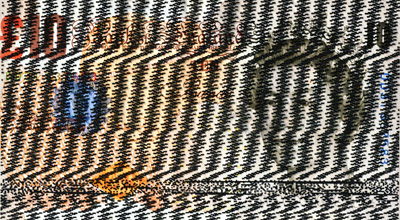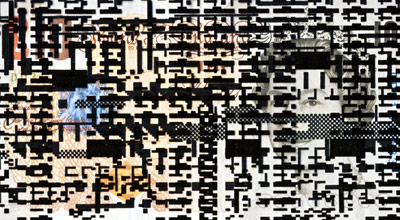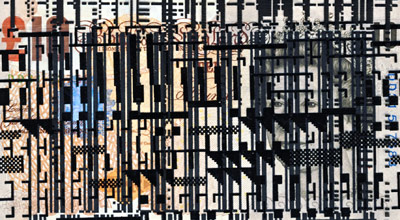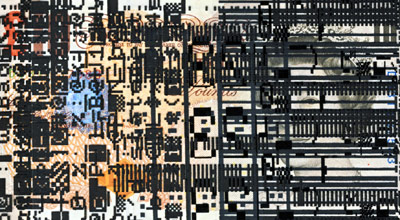




x #06
Jul.08

|

WAS £10.00 NOW ONLY £9.91!
Apparatus:
A flatbed scanner
An ordinary personal computer
One used British ten pound note
Miscellaneous digital glitches photocopied onto acetate
Photo editing software

WAS £10.00 NOW ONLY £9.97!
Method:
Attempts to scan a regular banknote failed; only a partial preview scan was possible before aborting, probably due to watermarks being recognised by the scanner driver software.
To test this hypothesis, a variety of visual glitches photocopied onto clear acetate sheets were inserted between the scanner glass and the banknote, and the scans re-attempted.
Not all attempts were successful. However, with sufficient density of glitch material, several scans were completed and saved for future reference. (viz. supporting images.)

WAS £10.00 NOW ONLY £9.94!
Conclusion:
Initial attempts to scan the banknote failed. By introducing the visual glitches, these acted like a catalyst, albeit an imperfect one; the scans were completed, although distorted by the glitches themselves.
We conclude therefore that the visual glitch can, in the right circumstances, act as an imperfect catalytic subversive agent against state-sponsered remote surveillance technology.
Currency is a lot like digital data. It is quantised, it flows, it can be processed, and it can contain errors.

WAS £10.00 NOW ONLY £9.98!
[*] Ant Scott (beflix) works and lives in Bournemouth, England. He is an artist engaged with digital media and so-called Glitch art.
He is one of the authors of Glitchbrowser (glitchbrowser.com — 2006), a joint collaborative artwork developed with Dimitre Lima and Iman Moradi, and also co-editor with Iman Moradi (also colaborating in this issue) of the forthcoming book 'Glitch: Designing Imperfection' (Mark Batty Publisher — October 2008).
In this issue — x#06 (ERRORS AND GLITCHES) — we have also included an interview with Ant Scott.
|